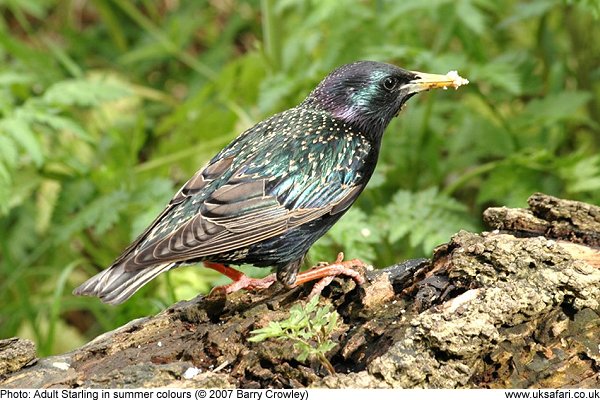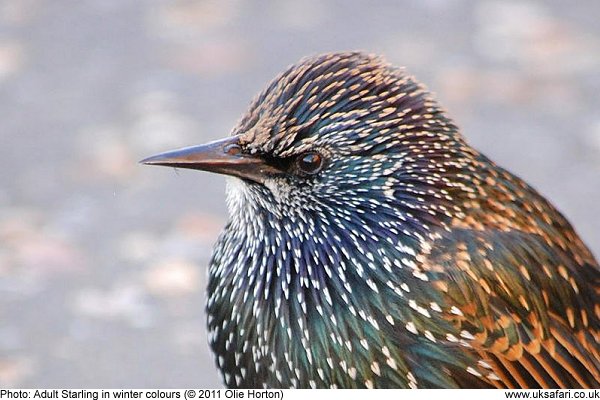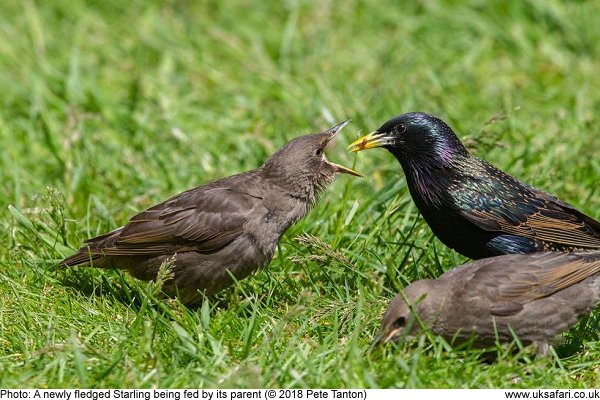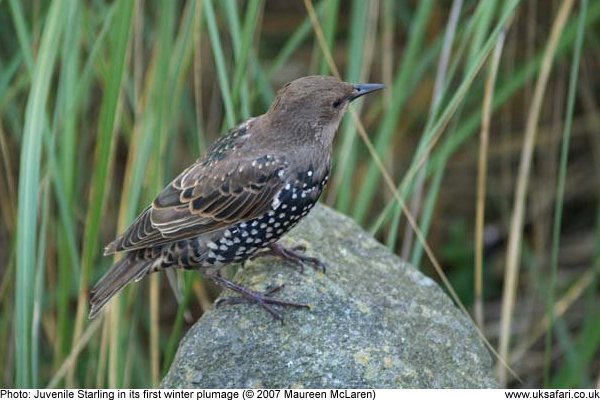 Quick Facts
Quick Facts
Scientific name: Sturnus vulgaris
Size: Approx 22cm with a wingspan of 40cm
Distribution: Found throughout the UK
Months seen: All year round
Life Span: Average 5 years but can live to over 17 years (source BTO)
Habitat: Parks, gardens, towns, cities, farmland and reedbeds
Food: Seeds, fruit and insects
Special features: The starling's plumage is mostly black, speckled with white. It has glossy feathers which reflect the light with a green and purple sheen. In winter the white speckles are more pronounced.
In spring, the male starling has a blue patch at the base of his beak, while the female has a pink patch at the base of hers. In winter the beak goes a dark brown colour.
Juvenile starlings are pale brown, gradually becoming darker and more speckled as they develop. The beak is black, but after the first winter this becomes yellow.
Starlings nest in holes in buildings or in trees. The male builds a rough nest, and lets the female add the finishing touches. The female lays between four and seven pale blue eggs, and the pair take turns at incubating them.
In winter they gather together in large flocks to roost. Some starling roost sites can have over a million birds.
 Related Pages
Related Pages

 Popular Pages
Popular Pages
Amphibians, Bats, Badgers, Beetles, Birds, Birds of Prey, Bumble Bees, Butterflies, Caterpillars, Creepy-Crawlies, Deadly Spiders, Dolphins, Dragonflies, E-Postcards, False Widow Spiders, Free Newsletter, Frogs, Fungi, Garden Spiders, Glow-Worms, Grey Squirrels, Hedgehogs, House Spiders, Ladybirds, Mammals, Marine Mammals, Moths, Owls, Reptiles, Spiders, Toads, Trees, Wildlife Hospitals
© Copyright 2017 G. Bradley - UK Safari | About Us | Links | Contributors


 Starlings
Starlings





